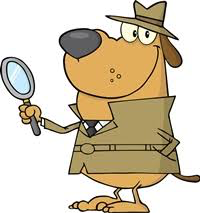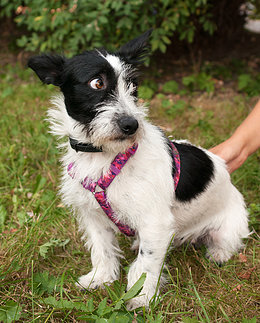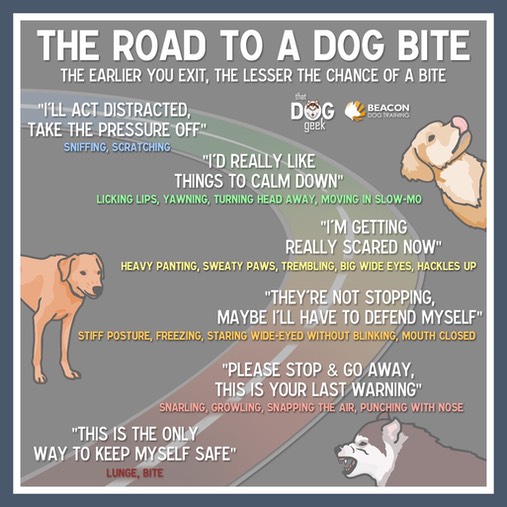
Humans have many misunderstandings when it comes to the behaviour of our canine companions. Preconceived notions run rampant. Mistaken personality traits are too often blamed for our own training shortcomings. Owners often accuse their dogs of being "willful” or “stubborn” when, in actual fact, their dogs are displaying stress or avoidance cues. This is especially reflected in statements such as
“I own a x (insert breed name here) and they are notoriously stubborn”.
While there is no doubt dogs have their own individual personality traits and there are certain traits common within any given breed, this should not be used as an excuse for dog’s behaviors resulting from your own training deficiencies. This is a people problem, not a dog one.
Let me give you an example:
You bring you dog to class, cue the sit you have been practicing all week at home with success. Your dog performs a sit but his hindquarters swings out to look at another dog. You reach down, move your dog’s butt into your side and reward your dog. Your dog grabs the treat and quickly looks away at another dog in front of him who is closely observing what is happening. You move your dog a couple of steps, cue a sit again. Your dog is slow to respond, you put small upwards pressure on the leash, the dog sits, you reward but the dog looks across the room at the second dog who is still staring intently at him. That dog moves, your dog follows, you cue the dog to look at you, your dog does but quickly looks away again. You raise your voice, your dog glances your way but lays down and yawns.
A scenario like this is quite common. Many owners would attribute the behaviour to the dog being unfocused. The dog has had enough or is being a…(insert “princess”, “stubborn”, “pig headed”). While this may be correct, there is a much greater likelihood something else happening here.

Let’s identify and discuss a number of factors that may be contributing to the dog’s lack of compliance.
i.) Group classes can be super stimulating for your dog. The training room is filled with other dogs and people. Most are a smorgasbord of smells for your dog. It lends itself to a highly distracting situation. If you wish your dog to pay attention to you, you need to up your game. You need to ensure you are more exciting than everything else happening in the room. If you are not, your dog will quickly loose interest. You need to realise that even if you do up your game, sometimes your dog will still be interested in what else is happening. That is ok. Short intense work follwed by a break, especially when it comes to younger dogs, is totally fine. Make it fun and exciting. Your dog will respond accordingly.
ii.) Speaking of getting distracted or loosing interest, when this happens many owners respond by physically manipulating their dog. Hands fly toward their dogs, the dogs get pushed into position. Voice tone changes and frustration begins to emerge. This is not fun for your dog. They may initially respond but quickly loose interest in the activity. When training is not enjoyable, your dog will stop responding. They will show signs of disinterest or even worse, stress. Again, you need to up your game. Make the training fun and be patient. Who cares if your dog does not immediately pop into a sit. Wait, be patient and promptly reward when he does. Amp up the reward. Ensure the dog knows that doing what you ask is the BEST THING EVER.
Karen Pryor talks about the concept of “poisoned cues”. A poisoned cue occurs when a dog develops a negative association with a cue. The unpleasant association results in the the dog being hesitant to perform the requested behavior or worse, will not do it at all. Unpleasant associations can be the result of a reprimand or a leash correction which most humans understand. But what we think is unpleasant and what the dog thinks is unpleasant is often different. A slight tug on the leash, pulling on our dog’s collar, leaning over the dog, can all be unpleasant and cause the dog stress. Be aware of this concept and immediately change your behavior if you recognise yourself failing into that trap.

iii.) While we are on the topic of stress, there are many things that can stress your dog out. Frustration from the owner is a big one. Unwanted attention from other dogs in class is another. Overt and covert displays of aggression from other dogs are often missed by owners and novice instructors alike. Nothing will kill a dog’s drive to perform a skill than feeling intimidated by another dog in the class and realising his owner is not responding to the same. Often times, looking away, laying down, and yawning are not indications your dog is being stubborn but are classic avoidance behaviors. Respond to these accordingly. Get some space between your dog and the offending party. Take a short break. Bring your dog outside of the room, get some water or have cuddle session and start again. If you, the owner, are the offending party, take a breather, get your head back in the game, reset and try again. Your dog will thank you for it.
A key concept discussed in all my training classes is the importance of developing proper communication with your dog. When students are first introduced to the concept, many balk at the idea thinking they know better. The proof however is in the preverbial pudding. We humans are poor communicators especially when it comes to interacting with our dogs. It amazes me our dogs understand as much as they do. It is a true testiment to their patience and just how magnificient they are. When we open those lines of communication, our dog’s frequency for correct responses increases exponentially.
It is a beautful thing to witness.
Here is a useful chart I came across which describes some signs of stress and explains how, if not recognized, it can quickly lead to a danerous situation.
